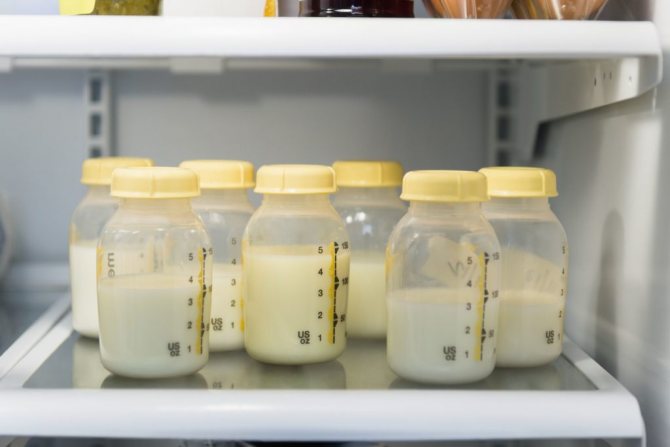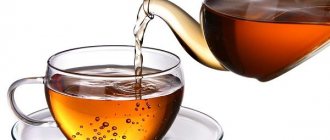Probably every breastfeeding woman has had to express breast milk at least once. Some had to separate from their baby and pump so as not to miss a feeding. Some people, when going on long walks in the fresh air, prefer to bottle feed. Some mothers experience problems with milk stagnation and express themselves due to lactostasis. How should you pump correctly in these cases and when is it better to avoid pumping?
In some cases, pumping is necessary, but often it can be avoided so as not to harm the natural process of breastfeeding.
Why pump your breasts?
Often, a nursing mother faces a difficult dilemma - to listen to the advice of previous generations (express breasts after each feeding) or follow the recommendations of doctors who claim that, by modern standards, it is better to express milk in exceptional cases. After all, the procedure itself is not very pleasant for a young woman, and often even causes pain. So is it necessary to express milk? Any breastfeeding consultant will answer that it depends on the situation, since there are cases when a nursing woman cannot do without pumping.
Cases when pumping is not necessary
- In the first days after birth. It is not correct to think that as soon as a baby is born, the mother’s breasts are already filled with milk. No, at first only colostrum arrives, and the milk itself comes only on the third day. Therefore, it is not necessary to massage or stimulate the breasts; food that is beneficial for the newborn will not appear faster. There is a time for everything; it is better to replace pumping these days with extra latching of the baby to the breast.
- If the baby is reluctant to take the breast. Small children are very lazy and cunning from birth; if a nursing mother supplements her baby’s feeding from a bottle, then over time the baby will try to drink only from it, forgetting about the mother’s breast. This makes it easier for him to eat and the formula is often much sweeter than breast milk. Therefore, mothers who have little milk or whose baby has difficulty latching onto the nipple should not give their baby a bottle on demand or express milk. It is better to put the baby to the breast more often and try different feeding techniques.
- With stable lactation. If the child eats on average every 2-3 hours, is full and behaves calmly, then the milk comes in normally and the baby has enough of it.
When is pumping necessary?
It is necessary to express excess milk in the first week after birth, when the baby is just getting used to milk. At this point, too much of it arrives and it is better to express it as needed up to several times a day only until the breast condition improves. But you need to know in moderation in everything - you don’t need to pump after every feeding, this will cause even more milk to come in. Over time, the baby will adjust his feeding schedule and milk volume.
The second reason why it is better to remove excess milk from the mammary glands is lactostasis. With this unpleasant disease, due to blockage of the milk ducts in the female breast, unnecessary seals are formed, which can subsequently cause fever and pain.
To prevent the development of mastitis, milk in case of lactostasis must be expressed manually.
And in the future, when the lactation process is established, you can stop pumping and make sure that the baby completely sucks out the accumulated milk.
Sometimes you have to resort to pumping during a mother’s illness, when a nursing woman is forced to take strong medications or antibiotics. To maintain milk production, it is necessary to express your breasts up to 10 times a day, then after completing the course of taking medications, the mother will be able to continue feeding.
In order to give the premature baby all the necessary substances, it is also worth expressing milk and feeding the baby from a bottle. In such a situation (if it is not possible to put the baby to the breast immediately after birth), you should resort to emptying the breast 6 hours after birth, first strain the colostrum, and then all the arriving milk.
A woman has to resort to pumping in exceptional cases, for example, with lactostasis, taking potent drugs, or if the baby is premature.
When not to pump
You shouldn’t pump after every feeding, as they used to say, “until the last drop.” A healthy female body produces exactly as much milk as a newborn can eat. The older the baby gets, the more milk he consumes and the more milk he receives. Excessive pumping will lead to excess milk at the next feeding, which in turn can lead to complications for women's health. In addition, there are categorical cases when natural feeding, and, accordingly, pumping, is not acceptable:
- if contraindicated by the child. These are diseases of the following nature: individual lactose intolerance, leucinosis, abnormalities in the development of the gastrointestinal tract or phenylketonuria;
- with contraindications from the mother. There are several categories here: when breastfeeding is prohibited (AIDS, HIV infection, hepatitis), when feeding can be continued after the disease has been eliminated (viral herpes, prescription of psychotropic, radioactive or iodine-containing drugs, as well as severe forms of illness when there is no way to care for the newborn , oncology treatment) and when breastfeeding should be treated with great caution (inflamed breasts, tuberculosis, drug use).
In severe cases, the decision on feeding is made collectively, by several doctors at the same time.
Drinks and products that increase milk lactation
Teas for breastfeeding
Fortunately, tea to increase lactation can be found in pharmacies and specialized retail outlets. Sugars, fruit powders and medicinal herbs are added to the soluble raw materials for brewing. For example, today the following are in demand:
- Hipp tea;
- Humana tea;
- Kruger tea;
- Nestik tea;
- Lactavit tea;
- Lactaphytol tea;
- Grandma's Basket tea.
In addition to store-bought ones, you can take homemade drinks. It is very important to find out in advance what you can and cannot drink to increase breast milk production. Before use, you should make sure that all components of homemade herbal teas are well tolerated. Here are the most effective recipes for teas made from herbs and other natural ingredients:
- tea from dill, fennel, cumin, lettuce, anise (1 large spoon of seeds per one and a half glasses of hot water);
- chamomile tea (1 large spoon of chamomile flowers per glass of hot water, heat in a water bath for a quarter of an hour);
- ginger tea (boil a small amount of crushed ginger root in water, add honey and lemon);
- milk tea (black or green tea with added milk);
- Instead of tea, you can brew nettle and rose hips (these accessible herbs have long been used in folk medicine and are considered medicinal).
In addition to teas, do not forget about clean water. You can buy fruit juices and healthy drinks, for example, good products from the manufacturer Hipp and Nestlé. Do not under any circumstances consume beer or other alcoholic drinks; they destroy the entire body and are clearly harmful to your child.
Nutrition to enhance lactation
If problems are anticipated or already exist, then it is advisable to include the following products in the breastfeeding diet:
- natural milk and dairy products - 250-400 grams per day;
- fish, meat and poultry - 1-2 times a day (liver consumption is also encouraged);
- bread and all types of cereal porridges (it is better to exclude white bread) - 3 times a day to cover the need for B vitamins;
- margarines, oils - in small quantities to cover the need for vitamin A;
- vegetables, fruits - 6 times a day (for example, orange juice, potatoes, vegetable salads, yellow and green vegetables);
- raw vegetables, oranges, berries, fresh cabbage, tomatoes - to cover the need for valuable vitamin C;
- bright yellow and dark green vegetables - to cover the need for vitamin A;
- eggs - 1 piece per day;
- all types of nuts in small quantities (for example, almonds, pine nuts and walnuts);
- royal jelly and honey.
Of the cereals, oatmeal and buckwheat have the best effect on the female body. To make eating cereals more interesting, you can add fruits and dried fruits to them.
The consumption of fresh, canned, dried and frozen fruits and vegetables is not prohibited. If you are overweight, it is better to replace butter with vegetables rich in vitamin A, consume a minimum of bread and fatty meat, and choose only low-fat milk.
It is useful for everyone to reduce the consumption of high-calorie foods or completely remove them from the menu. For example, these are cookies, pies, sweets and various confectionery products.
You should not limit yourself to milk, vegetables, dietary meat and fruits.
How to increase lactation: eat right and drink enough fluids
Homemade recipes to enhance lactation
Take note of several successful recipes for fully nourishing the female body during breastfeeding:
- radish with honey (combine 100 grams of radish juice, 100 grams of water and 1 tablespoon of honey, take a third of a glass three times a day);
- walnuts with milk (brew half a liter of hot milk in a thermos with 5 crushed walnuts, leave for 3 hours, take warm before the feeding session);
- carrots with milk (crush raw carrots as much as possible, mix with milk, take three times a day);
- sour cream with cumin (combine a glass of sour cream and a large spoon of cumin, boil for 3 minutes);
- cream with cumin (mix 2 cups of natural cream and 2 large spoons of cumin, leave in the oven for half an hour, take a glass twice a day);
- a mixture of carrot and dandelion juices.
Using any folk methods of increasing lactation, the mother acts at her own peril and risk, so if you come across strange recipes from unfamiliar or potentially allergenic products, then think carefully about whether they will be completely safe for you and the child.
Where to express breast milk
Expressing breast milk is one thing, but where to express it and how to preserve all the beneficial properties in it is another. If a young mother empties her breasts so that someone can feed the baby in her absence, then a clean bottle is enough, from which the baby will then drink. If a mother uses a purchased device to express milk, then, as a rule, a special container is sold complete with such devices. You can express milk in it, store it, and then give it to your baby during feeding. When the breasts are emptied of excess milk for further long-term storage, you can use store-bought plastic containers or freezer bags. The milk is expressed, dated and stored in the freezer.
In everyday life, you can use baby food jars to collect milk; they are made of glass, which will allow the milk to be preserved, and they are small in volume - it is convenient to give one jar for one feeding. But they store milk in such a container for no more than a day; it is also not recommended to put glassware in the freezer.
One thing is absolutely certain - you need to express milk in the container in which it will be stored; you should not pour it from one cup to another.

It is better to express milk in containers in which it will be stored, for example, in special containers for breast pumps.
Popular drugs to improve lactation
There are effective mixtures for increasing lactation and other products. Any pharmaceutical products can be used only after consulting a doctor. The doctor will tell you how to change your lifestyle and diet, and also recommend what to drink for better quality breast milk. Here are the most popular drugs:
- vitamin and mineral complex Materna;
- vitamin and mineral complex Gendevit;
- vitamin and mineral complex Centrum;
- Femilak dry mix;
- dry mix Enfa-mama;
- dry mixture Dumil-mama-plus;
- Olympic dry mix;
- MD mil Mama mixture (chocolate or vanilla);
- dry mixture with Milky Way lacto-additive;
- Dietary supplement Apilactin;
- Apilak tablets;
- Mlekoin granules (pharmacy homeopathic preparation);
- drug Lactofil;
- vitamin D preparations (used exclusively on the recommendation of a doctor to improve the absorption of calcium from food).
We have listed effective remedies offered in pharmacies, but ideally, medications are selected on an individual basis. Next, we will analyze folk and nutritional methods of increasing lactation.
Breast preparation
Since it is recommended to empty the breasts on your own only when milk is stagnant, therefore, small lumps have already formed and should be removed. When experiencing discomfort or pain, nursing mothers are ready to listen even to folk recipes. One of them is
cabbage leaves, which are beaten and applied to the chest for several hours. This method softens lumps and makes subsequent pumping easier.
If the consequences of lactostasis are not yet too serious and there is no fever, then you can use the warming method. A warm shower or bath, tea or a warm diaper, which is placed on the chest and wrapped around the body.
One of the truly effective methods is breast massage for pumping. But it must be done using proven techniques, otherwise pressing hard or at the wrong points can further aggravate the problem.
Which pumping method should you choose?
The main criterion when choosing an effective pumping method is the frequency of pumping. Basically, there are two methods - manual and with a breast pump. If a nursing woman’s lactation is generally stable and only occasionally has to express a portion of milk, then there is no need to buy additional equipment; the manual method is quite sufficient.
In what ways does manual expression prevail over hardware? What are its advantages and disadvantages?
On the positive side, the manual method characterizes:
- cheapness. There is no need to spend money on expensive devices;
- versatility. In any setting you can express the excess;
- increase in lactation. Due to additional stimulation, milk production increases;
- physiological;
- painlessness;
- Lowest risk of injury.
The disadvantages include:
- duration of the process;
- The method is labor-intensive; to master the painless technique, it takes a long time to practice.
Since there are many more advantages of the manual method, many nursing women choose it. Moreover, morally expressing the breast by hand is much more familiar than using a breast pump. The second method is chosen mainly to save time and for regular emptying of the mammary glands. But what is better, a breast pump or manual expression, is up to the mother to decide, because each method has its advantages.
Methods of expressing milk during lactation
Summary of the systematic review
This document is a summary of the findings and therefore some of the data presented in the systematic review may not be included.
For a full summary of the results, see the original publication linked below. Original source
Becker GE, Smith HA, Cooney F. Methods of milk expression for lactating women. Cochrane Database of Systematic Reviews 2021, Issue 9. Art. No.: CD006170. DOI: 10.1002/14651858.CD006170.pub5.
Main results
- It was not possible to obtain summary data due to the heterogeneity of interventions, comparison groups and outcome measures.
- There were no consistent differential effects of either milk expression method on maternal satisfaction.
- Rates of milk and nipple contamination or breast pain did not differ between milk expression methods.
- The amount of milk expressed was greater with interventions that included breast warming, breast massage, relaxation techniques, pumping more frequently, using appropriately sized nipple shields, and starting pumping early.
Goals
To evaluate the impact of different breast milk expression methods on outcome measures including maternal satisfaction, adverse events, quantity and nutritional value of expressed milk, and cost.
How the studies were selected
The following databases were searched in March 2021:
- Cochrane Pregnancy Group Study Register
- CENTRAL (The Cochrane Library)
- MEDLINE
- EMBASE
- CINAHL
In addition, relevant journals, conference proceedings and reference lists were searched, and the authors were directly contacted by researchers and organizations working in the field.
Criteria for inclusion of studies in the review
3.1 Type of research
Randomized controlled trials or quasi-randomized trials, including crossover trials.
3.2 Research participants
Women who have expressed or pumped breast milk in any way and for any reason.
(There were no exclusion criteria regarding the health status or gestational age of the baby, or whether the woman was breastfeeding or not.)
3.3 Interventions
Instructions or equipment provided for manual expression or mechanical pumping of breast milk, or a specific protocol or program to support milk expression compared to any other method of expression or no intervention.
3.4 Main evaluation criteria (outcomes)
- Maternal satisfaction with the method (acceptability, comfort, ease of use, provision of pumping/pumping).
- Undesirable outcomes (contamination of milk, injury to the breast/other organs, reduction or cessation of pumping or expressing due to difficulty).
Indirect endpoints (outcomes) included transition to breastfeeding (if the woman had expressed milk before breastfeeding), amount of milk expressed, time required to express milk, nutritional value of expressed milk, physiological impact of pumping on the mother, and economic endpoints (outcomes) ( cost of equipment, impact on length of hospital stay, use of health services).
Main results
4.1 Studies included in the review
The present review included 41 randomized controlled trials involving 2293 women.
- 25 trials were parallel group designs and 16 trials were crossover trials.
- Most trials assessed breast pumps, with 11 trials additionally assessing manual expression and 14 trials comparing different breast pumps or vacuum devices.
- 20 trials assessed protocol or interventions, including comparisons of sequential and simultaneous breast milk pumping (5 trials), pumping frequency, education and support (3 trials), audiovisual relaxation aids (3 trials), start time among mothers of very low birth weight infants body at birth, breast massage prior to pumping (2 trials), non-contact massage, breast warming prior to pumping, nipple shield sizes, breast cleansing protocol, and combination of hand expression and pumping versus pumping alone.
- Of the 41 trials that met the inclusion criteria, 22 studies involving 1339 women had data for analysis.
4.2 Conditions under which the studies were carried out
- Australia (2 trials), Brazil, Canada (2 trials), Ecuador, Egypt, India (2 trials), Israel, Malaysia, Mexico, Turkey, United Kingdom of Great Britain and Northern Ireland (4 trials), United States of America (23 trials) , and one multinational study was conducted in Kenya and Nigeria.
- Twenty-six trials (two thirds of all participants) were conducted in women with premature or sick infants in neonatal units; 14 trials were conducted in mothers of healthy full-term infants living at home; and one trial was conducted in both newborns and healthy older children.
4.3 Conditions under which the studies were carried out
How the data was analyzed There were 13 comparisons: i) any type of breast pump versus hand expression; ii) any manual breast pump versus manual expression; iii) any manual breast pump versus any other manual breast pump; iv) any battery-powered or small electric breast pump versus any other battery-powered or small electric breast pump; v) any large electric breast pump versus manual expression; vi) any large electric breast pump versus a manual breast pump; vii) any large electric breast pump versus a battery-powered or small electric breast pump; viii) any method with a specific protocol for simultaneous pumping versus sequential pumping; ix) any method with a specific relaxation technique versus no specific relaxation technique; x) any method plus special instruction or support versus any method without special instruction; xi) any method plus breast massage versus no breast massage; xii) any method plus chest warming versus no chest warming; and xiii) any vacuum evacuation protocol versus no vacuum evacuation protocol. The studies were judged not to be similar enough to be pooled for meta-analysis. Sensitivity analyzes on trial quality were also planned but not performed. If sufficient data were available, the following subgroup-level analyzes were planned:
- gestational age;
- time of intervention since birth;
- manufacturer and model of breast pump;
- test design.
Summary Any type of breast pump versus hand expression
There were no differences between the breast pump and hand expression groups for the outcome measures of milk contamination (hazard ratio (RR) 1.13, confidence interval (CI) 95% [0.79 to 1. 61]) or switching to breastfeeding (RR 1.30, 95% CI [0.63 to 2.67]), in one trial of 28 participants. One trial of 45 women that compared hand expression with electric and manual breast pumps found one case of nipple injury in each breast pump group and no cases in the hand pump group.
Any manual breast pump compared to manual expression
Bacterial levels, measured in Dornic acidity, did not differ between intervention groups (MD 0.20, 95% CI [−0.18 to 0.58], 1 trial/142 women). The mean volume of milk expressed over 6 days was greater in the manual breast pump group (MD 212.10 ml, 95% CI [9.39 to 414.81], 1 trial/48 women), but was not significantly greater with fourth to fifth days. In one trial of 118 women, potassium concentrations were higher (MD 1.20 mmol/L, 95% CI [0.04 to 2.36]) and sodium and protein concentrations were lower (MD −6.0 mmol/L , 95% CI [−9.79...−2.21] and MD −1.30 g/l, 95% CI [−2.56...−0.04], respectively) in the group that used manual pumping.
Any manual breast pump compared to any other manual breast pump
In a crossover trial using four different breast pumps and involving 32 women, the Isis breast pump received the highest ratings for ease of use and overall experience, while the Harmony and Little Heart breast pumps received equal ratings, and the Evenflo breast pump received the lowest ratings (p< 0.001). The Isis, Harmony and Little Heart breast pumps scored favorably on perceived pumping time compared to the Evenflo breast pump (p = 0.007). A slight preference for push-type mechanisms over cylinder-type mechanisms was also reported. The amount of milk expressed in 24 hours was greater with the Isis breast pump compared to the Evenflo breast pump (MD 30.49 ml, 95% CI [3.40 to 57.58]) and with the Harmony breast pump compared to the Evenflo breast pump ( MD 28.5 ml, 95% CI [12.11...44.89]).
Any battery-powered or small electric breast pump compared to any other battery-powered or small electric breast pump
In one trial of 62 women, there was no overall preference for a standard or new electric breast pump, and no preference between breast pumps when women chose a breast pump for subsequent use. In one trial of 40 women, the UNO small electric breast pump took 4 minutes longer to express milk than the Swing small electric breast pump (MD 4.00 minutes, 95% CI [1.19 to 6.81]).
Any large electric breast pump versus manual expression
Using a breastfeeding self-assessment scale, one trial of 68 women found that using a large electric breast pump compared with hand expression increased the likelihood that women would not want anyone to see them hand expressing/pumping. breast milk (MD 0.70 points on a scale from 1 to 5, 95% CI [0.15...1.25]). Women were also less likely to be satisfied with instructions on how to use an electric breast pump (MD −0.40 points, 95% CI [−0.75 to −0.05]), as measured by the Breast Milk Expression Experience Scale. Adverse events including chest pain, rated on a scale of 1 to 10 (MD 0.02 points, 95% CI [−0.67 to 0.71], 1 trial/68 women), bacteria levels (MD 0.02), Dornic acidity 10 degrees, 95% CI [−0.29 to 0.49], 1 trial/123 women) and CFU/mL (1 trial/16 women; data not shown) did not differ between groups using electric breast pumps and manual expression. The mean volume of milk expressed over 6 days was greater in the manual breast pump group (MD 373.1 ml, 95% CI [161.09 to 585.11], 1 trial/43 women), and from day 2 to fifth. Milk sodium concentration was lower when using a large electric breast pump (MD −6.90 mmol/L, 95% CI [−10.58 to −3.22], 1 trial/111 women).
Any large electric breast pump compared to a manual breast pump
There was a significantly higher level of maternal satisfaction when using a manual breast pump compared to a large electric breast pump in one trial of 145 women (ease of use: p = 0.03, comfort: p = 0.003, enjoyment of use: p = 0.01 , overall impression: p = 0.003, duration of pumping: p = 0.05). According to the same study, the same percentage of women in each group developed nipple irritation (7% in both groups) or breast engorgement (4% in the manual breast pump group versus 6% in the electric breast pump group). and 2% of women who used an electric breast pump developed mastitis. In another study of 60 women in the same group, the same manual breast pump was found to be preferable to a small electric breast pump (comfort: 73% vs. 20%, enjoyment: 58% vs. 20%, overall experience: 69% in compared to 42%, but there were no differences in ease of use: 63% vs. 65%, duration of pumping: 67% vs. 71%). A significantly higher percentage of women also chose to use a manual breast pump after completing the study (64% versus 34%, p = 0.049). However, in another small study of nine women, a large electric breast pump was preferred over a manual breast pump (data not shown). Bacterial levels did not differ between the electric and manual breast pump groups (MD −0.10 Dornik acidity, 95% CI [−0.46 to 0.26], 1 trial/141 women). Time spent pumping per day was reduced by more than 20 minutes using a large electric breast pump compared to a manual breast pump (MD 20.27 minutes, 95% CI [28.30 to −12.24], 1 trial/145 women). Protein concentration was higher in the milk of women using an electric breast pump (MD 1.40 g/L, 95% CI [0.08 to 2.72], 1 trial/121 women).
Any large electric breast pump compared to a battery-powered or small electric breast pump
In one trial of 71 women, mothers preferred a smaller, less expensive breast pump over a larger electric breast pump due to ease of use and control button location (data not shown). The volume of milk expressed per expression was greater with the Whittlestone breast pump compared to the UNO breast pump (MD 20.0 ml, 95% CI [1.28 to 38.72]), and the time required to pump was shorter ( MD −6.0 minutes, 95% CI [−8.81 to −3.19], 1 trial/40 women).
Any method with a specific protocol for simultaneous pumping versus sequential pumping
One study of 25 women found that women had a greater preference for simultaneous pumping compared to sequential pumping, while two other studies involving 49 and 52 women reported no differences between groups (data not shown). ). Simultaneous pumping of breast milk reduced pumping time per week by 3.5 hours (MD −3.50 hours, 95% CI [−5.61 to −1.39], 1 trial/32 women).
Any method with a specific relaxation technique versus no specific relaxation technique
In one trial of 55 women, the amount of milk expressed was greater when using a relaxation tape (MD 34.70 ml, 95% CI [6.10 to 63.30]), and mothers rated the relaxation technique favorably (data not shown). ).
In one crossover trial examining non-contact massage versus sham non-contact massage, neither method was favored as having an advantage over the other method ( P
> 0.05, data not shown). In the same study, more mothers experienced milk leakage (an indicator of oxytocin release) when using a non-contact massage (28%) than when using a sham non-contact massage (6%) or no non-contact massage (0%). In one trial of 160 women, the volume of milk expressed while listening to music was greater on all measurement days (days 1, 5, 10, 14) by more than 500 ml of milk expressed on day 14 (MD 503.3 ml, 95% CI [410.8...595.8]), and on average over 14 days - by 166 ml in the control group compared to 317 ml in the music listening group. In the same trial, milk fat content was significantly higher when listening to music on days 1, 5 and 10 (8.6–14.0 g/L higher), but was not significantly different on day 14 (MD 21.30 g/l, 95% CI [−2.46...45.06]). In a trial of 29 mothers of preterm infants, a higher mean breast milk volume was reported by 7.12 ml (SD 1.57) compared with 6.68 ml (SD 1.37) in the group not receiving the music therapy intervention.
Any method plus special instruction or support versus any method without special instruction
In one trial of 60 women, women who received an education intervention were more likely to start pumping sooner (p < 0.004, data not shown) and were twice as likely to initiate breastfeeding (RR 2.00, 95 % CI [1.25...3.21]). The majority of women who received a support intervention in one trial reported that it was helpful in initiating and maintaining their breast milk production (instruction session: 11 of 14 women; telephone follow-up: 10 of 12 women; telephone helpline: 2 out of 4 women). There were no differences between groups in the amount of milk expressed or the lipid content of the milk. Although time spent pumping per day did not differ significantly between groups during weeks one through three, in weeks four, five, and six women spent approximately 30 minutes more time pumping if they received instruction or support (all p ≤ 0 .02, 1 trial/33 women).
Any method plus breast massage versus no breast massage
Amount of milk from two expressions (MD 4.82 ml, 95% CI [1.25...8.39]) and fat content in milk (MD 1.92%, 95% CI [1.02...2.82]) increased with breast massage in one trial of 72 women.
Any method plus chest warming versus no chest warming
In one trial of 78 women, milk quantity was measured from six pumping sessions. Warming the breast increased the amount of milk expressed by approximately 10 ml per pumping, and this result was statistically significant in four of the six measurements.
Any vacuum pumping protocol versus no vacuum pumping protocol
One crossover trial of 128 women found no difference in the amount of milk expressed using vacuum pumping mechanisms. The results of this study reported that women did not like the force with which the new experimental vacuum pump worked and that it was less comfortable than the old experimental vacuum pump (data not presented).
Other interventions
In one study of 20 very low birth weight infants, initiating maternal milk pumping within 60 minutes of delivery increased mean milk volumes in the first week, more than doubling the overall mean volume during the first 7 days (1374.7 ml versus 608.1 ml;
p
= 0.05). Increased pumping frequency (≥ 4 times per day) resulted in higher milk volumes than lower pumping frequencies (≤ 3 times per day) (mean 342 ml SD [229] vs. 221 ml SD [141] p > 0.02; 1 trial/25 women). In one trial of 20 women, more milk was expressed when using nipple shields measuring >24mm.
Additional comments from the authors*
The methodological quality of the included trials was mixed and at high risk of outcome bias and attrition bias due to failure to conceal the intervention from assessors and incomplete data on outcome measures ( outcomes) accordingly. The 41 trials identified were conducted in 14 different countries over more than three decades, and the results were not pooled due to heterogeneity in interventions, comparison groups, and outcome measures. Many of the cross-over trial data could not be used due to lack of data on differences between mothers or pair-wise analyses. Of the 30 trials that assessed breast pumps or products, 16 reported support from manufacturers.
Overall, few studies reported maternal satisfaction and there was no consistent preference for any method of milk expression. Levels of milk contamination did not differ between hand expression and manual pumping or between hand expression, manual breast pump use and electric breast pump use. Nipple or breast pain did not differ between pumping methods, but few studies reported data on these outcome measures. There were insufficient studies to provide results on childhood morbidity rates associated with milk expression method. Large volumes of milk were produced when using relaxation techniques, massaging the breasts before pumping, or during pumping and warming the breasts before pumping. There were no consistent effects on changes in prolactin or oxytocin levels by milk expression method.
More high-quality research is needed to compare milk expression methods. Such studies should be independently funded and consider outcome measures such as costs and mothers' goals for expressing milk.
*The views expressed in this section reflect solely the views of the authors of the systematic review.
What it's like to express your breasts by hand
If you analyze manual expression step by step, the process will look like this:
- First, preparation is required: choosing a comfortable position, dishes for milk.
- The hand is clasped around the areola, with the thumb placed on top and the rest of the palm on the bottom.
- Without removing your thumb from the areola, perform an up and down movement.
- The four fingers at the bottom lightly compress the chest to ensure suction.
- If milk appears in the form of a stream, then all actions have been performed correctly.
- After a few minutes, move in one direction and the other, in a circle from the nipple, to extract milk from the remaining ducts.
This is the case if it is necessary to lighten the breasts a little, but if milk stagnation has already been identified, then other manual expression techniques are used.
Marmet technology
The preparatory stage is the same - take a comfortable position, preferably sitting with a straight back, sterilize the milk container. Then the procedure is carried out with the right hand, holding the bottle with the left:
- The areola is grasped with two fingers - the thumb on top and the index finger under the nipple, the other three fingers are placed under the breast, they support the mammary gland during intense movements.
- Pressing slightly on the chest, close two fingers, ringing the areola. When the milk stream is released, the fingers return to their previous position.
- Repeat the movement until the chest is empty, gradually moving the grip in different directions. This method is often used for lactostasis.
Nipple compression method
This method is also used at the first signs of complications - if a nursing woman experiences pain or the nipples are quite rough. Then, with all your fingers, perform movements pressing on the nipple. Approximately 4 minutes of such compression and the mammary glands will become softer, and pumping will no longer cause severe pain.
Warm bottle method
If none of the above techniques brings results, then you can try another one. When the breast becomes inflamed, the nipples are tense and it is not easy to develop the mammary glands. Using a bottle will prepare the breast for the baby or ease the physical condition of the mother. Take a bottle with a fairly wide neck, heat it, but the top of the bottle needs to be cooled. Then the breasts in the nipple area are treated with Vaseline and the neck of a bottle is applied. Due to air circulation, the nipples will relax, milk will flow, and as soon as the mother feels relief, she should remove the bottle and give the breast to the baby.
Why do nursing mothers lose milk?
Here are the main reasons why women most often suffer from a lack of breast milk:
- emotional overload, constant stress and various disruptions in the nervous system;
- chronic lack of sleep and general fatigue;
- excessive physical activity;
- lack of fluid intake;
- irrational diet poor in certain substances;
- incorrect breastfeeding regimen (too infrequent breastfeeding or feeding on a schedule);
- hereditary factors;
- smoking and drinking alcohol;
- the mother does not have a psychological attitude towards breastfeeding, there are fears, lack of self-confidence and strength, and an unwillingness to feed the child in a natural way;
- mother's early return to work and all the ensuing consequences;
- feeding the child unnecessarily with formula;
- early introduction of a large volume of complementary foods;
- uncomfortable position when feeding;
- Feeding sessions that are too short;
- taking diuretics and contraceptives;
- physiological lactation crisis in a woman.
Experts point out that with normal breastfeeding, physiological lactation crises occur; this is a temporary phenomenon. Most often, crises, characterized by an unexpected decrease in lactation capacity, occur at the following stages of a child’s life:
- 3-6 weeks;
- 3 month;
- 4 month;
- 7 month;
- 8 month.
If a woman is doing everything correctly, but the amount of milk has decreased slightly, this may be normal. This phenomenon occurs because the child has an unstable appetite against the background of rapid growth and development, and the female body does not have time to quickly respond to changes in nutritional needs.
How to express your breasts with a breast pump
To begin with, it is better to try expressing with a manual breast pump - a pear. Due to the lack of experience, with this method there is less risk of harming the condition of the mammary glands. As preparation, sterilize the nozzle and clean your hands. Next, the nipple is placed in the nozzle, fixed, but carefully so as not to cause pain. Press the plunger or bulb, the first discharge will be in the form of drops, then they should change to streams of milk. There is no need to put pressure on the chest; you can lightly massage the glands to free all pathways. As soon as relief is felt in the chest, the procedure is stopped; such manipulations take up to 10 minutes. Both breasts are emptied, but not to the last drop. When finished, wash the device in soapy water and dry all parts separately.
https://youtu.be/nvwtguM3n2Q
How to quickly increase lactation using a breast pump?
Working with a breast pump makes a woman's life easier. You should discuss with your doctor how to express breast milk to increase lactation and act strictly in accordance with the instructions included with the device.
Breast pumps can be manual (piston with a working lever, in the form of a syringe, in the form of a pump) and electric. You can choose a model that meets all a woman’s requirements; there are a great many of them on sale.
All you need to do is regularly empty your breasts after feeding your baby, observing all sterility and safety conditions.
A pump breast pump requires rhythmic squeezing of a bulb, while a syringe design requires back-and-forth movements to ensure milk is drawn out using vacuum. The most convenient are breast pumps with a piston and a lever; we press the working part to the mammary gland and press the lever. Automatic models with electric drive are the easiest to handle; you just need to take a comfortable position, put the cup to your chest, select the desired speed and press start.
Correct use of breast pumps turns breastfeeding into a real pleasure, eliminates unnecessary problems and provides the baby with adequate nutrition.
How to increase lactation: express milk with a breast pump
How to express during congestion
Expressing during lactostasis requires more careful preparation - before the procedure you should take a warm shower and massage your breasts under running water. In a difficult situation, it would not be amiss to add cabbage compresses, add honey to the leaves and hold for 15 minutes. Then empty the breast manually; there is no need to use a mechanical breast pump. But we must not forget that lotions can only be done if the woman does not have a fever. Cabbage leaves are replaced with a towel or heating pad soaked in warm water.
How often should you pump?
The interval between pumping may vary, depending on the severity of the problem. For lactostasis, wait an hour or two, and the procedure itself is carried out for quite a long time - for half an hour they try to extract excess milk. If it is necessary to increase milk production, then express after several feedings for about 10 minutes and between feedings of the baby - no more than 1-2 times for 15 minutes. In case of strong hot flashes and discomfort, the procedure does not take long - 5 minutes.
If pumping is used to preserve lactation while taking medications, then it is maintained for 3-4 hours, replacing feeding the child.
There should be a lot of milk, an approximate portion for normal feeding. In this case, it is worth “pumping” the breast for up to 30 minutes. When it comes to freezing milk reserves, pumping is carried out at any convenient time, while emptying the breasts enough so that the newborn has enough to eat when he wakes up.
How much milk can you express at one time?
Mothers who have tested pumping on themselves will confirm that with any positive result, they will not be able to pump as much as the baby is ready to eat at a time. If you try to save the remaining milk after feeding, it will most likely only be a few drops. The opposite result and a large volume of milk can be achieved during hyperlactation or at night, when prolactin is produced most strongly. Before feeding your baby, you should not express more than 100 ml. It all depends on the woman’s physiology, the baby’s appetite and the situation.
With the appropriate knowledge, pumping during breastfeeding can make the life of a nursing woman easier. It’s not at all difficult to do this, and you can achieve great results. No mother is immune from diseases during this special period of life. By expressing milk in time, she will have a chance to recover faster with the help of medications, and the baby will not get unnecessary harmful substances.
READ ALSO: How to store expressed breast milk correctly and for how long.










